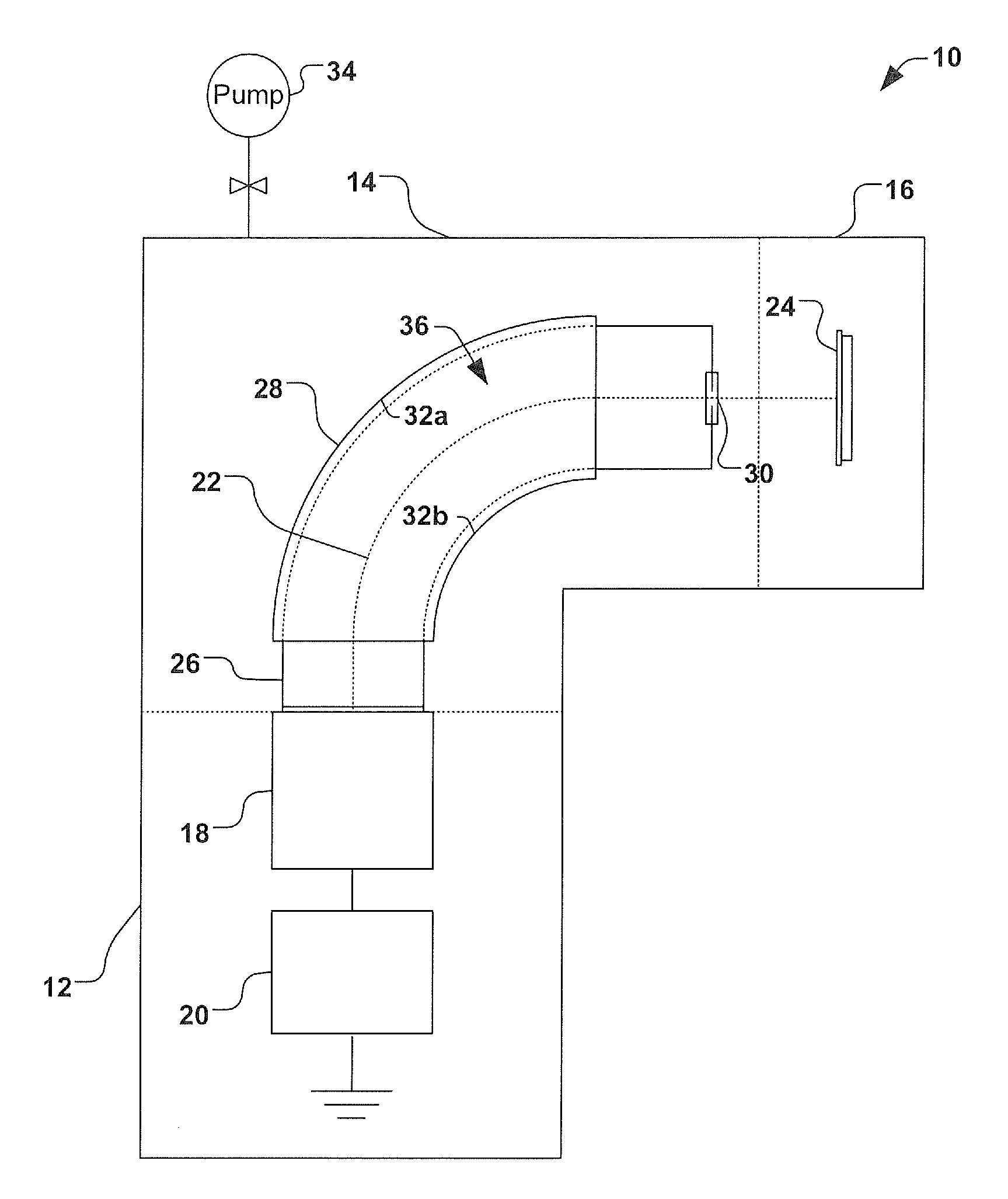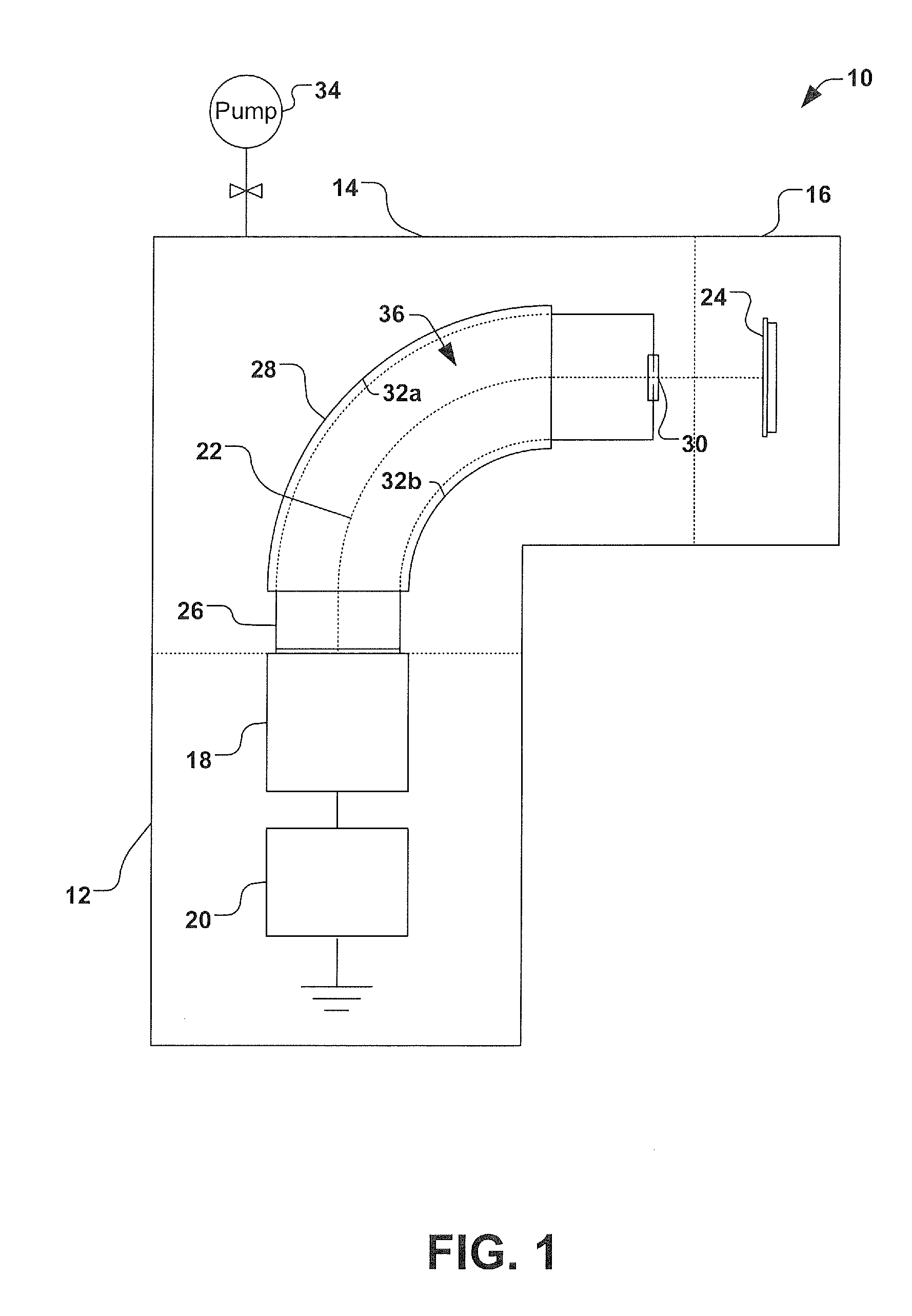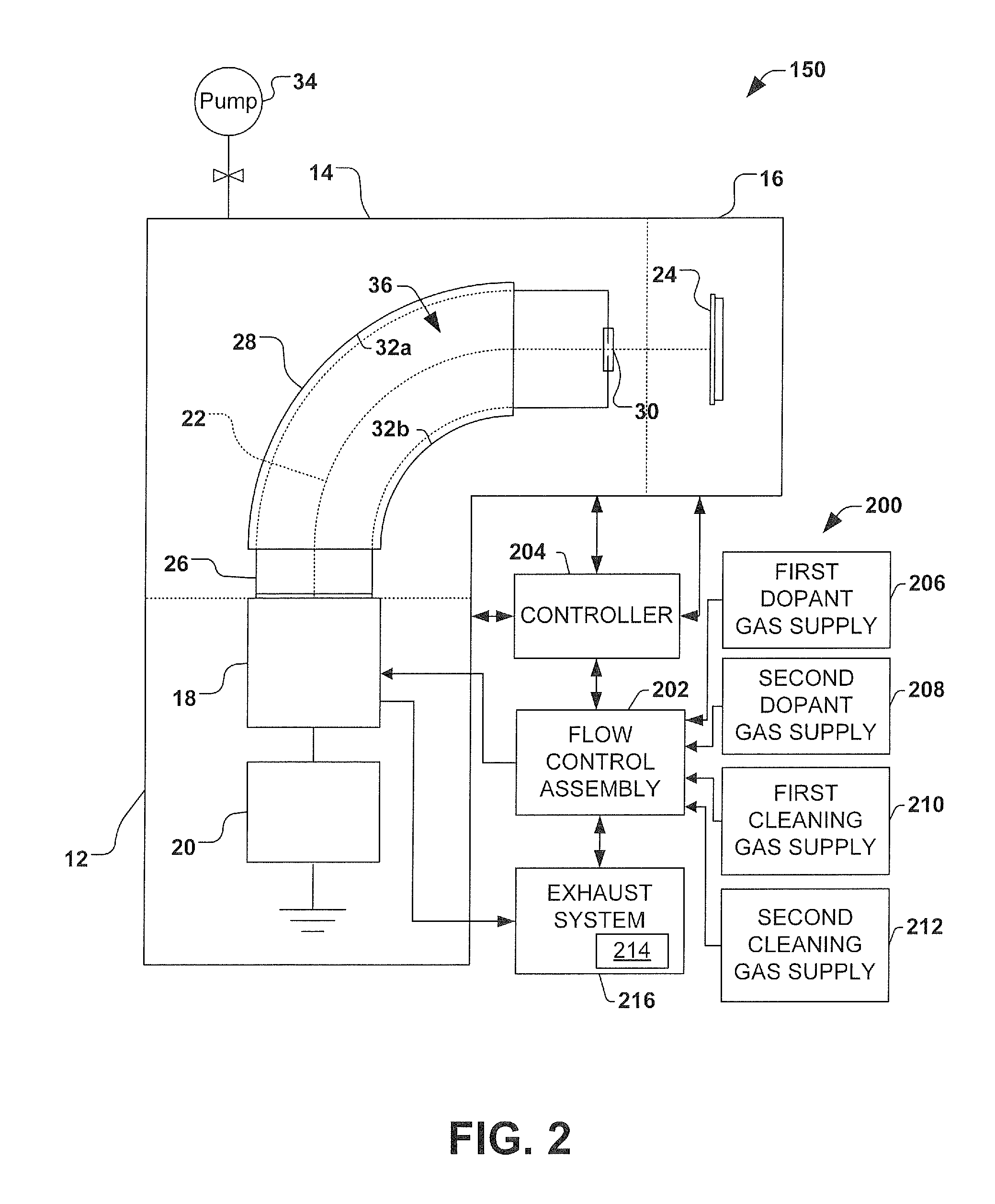Method and apparatus for cleaning residue from an ion source component
a technology of ion source and residue, applied in the field of ion implantation systems, can solve the problems of residue buildup, impede the operation of the ion source, and tend to dissociate after being ionized, and achieve the effect of facilitating the cleaning of residues
- Summary
- Abstract
- Description
- Claims
- Application Information
AI Technical Summary
Problems solved by technology
Method used
Image
Examples
Embodiment Construction
[0019]The present invention is directed generally towards residue removal techniques that are applicable to ion implantation systems. More particularly, the system and methods of the present invention provide an efficient way to reduce residue generated by large molecular species, such as, for example: carborane; decaborane; octadecaborane and icosaboranes; hydrocarbons such as C7H7 and C10H14, as well as standard ionization gases for the production of small molecular ion implant species (e.g., BF2, and monatomic species), such as boron trifluoride, phosphine and arsine. It will be understood that the foregoing list of ion implantation species is provided for illustrative purposes only, and shall not be considered to represent a complete list of the ionization gases that could be used to generate ion implant species. Accordingly, aspects of the present invention will now be described with reference to the drawings, wherein like reference numerals are used to refer to like elements t...
PUM
| Property | Measurement | Unit |
|---|---|---|
| time | aaaaa | aaaaa |
| charge-to-mass ratio | aaaaa | aaaaa |
| charge-to-mass ratio | aaaaa | aaaaa |
Abstract
Description
Claims
Application Information
 Login to View More
Login to View More - R&D
- Intellectual Property
- Life Sciences
- Materials
- Tech Scout
- Unparalleled Data Quality
- Higher Quality Content
- 60% Fewer Hallucinations
Browse by: Latest US Patents, China's latest patents, Technical Efficacy Thesaurus, Application Domain, Technology Topic, Popular Technical Reports.
© 2025 PatSnap. All rights reserved.Legal|Privacy policy|Modern Slavery Act Transparency Statement|Sitemap|About US| Contact US: help@patsnap.com



